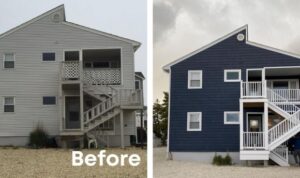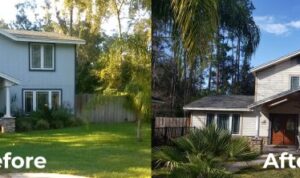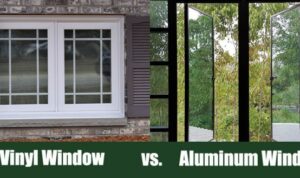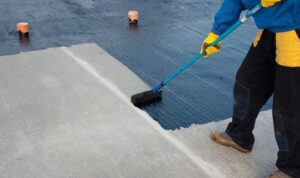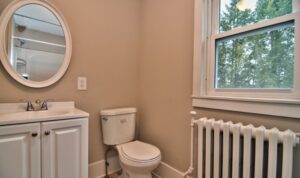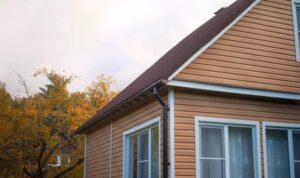Delving into the realm of cost to install new vinyl siding, this introduction entices readers with a blend of insightful details and intriguing facts, promising a journey filled with valuable information and unique perspectives.
The subsequent paragraph will shed light on the specifics of the topic at hand.
Factors Affecting Cost
When it comes to the cost of installing new vinyl siding, there are several factors that can influence the overall price. Understanding these factors can help homeowners make informed decisions and budget accordingly.
Quality of Materials
The quality of the vinyl siding material itself can have a significant impact on the overall cost. Higher quality materials that are more durable and come with additional features such as insulation or weather resistance will naturally cost more than basic, lower quality options.
For example, premium vinyl siding with enhanced durability and color retention may cost more upfront but can save money in the long run by reducing maintenance and replacement costs.
Labor Requirements
The complexity of the installation process and the amount of labor required can also affect the overall cost. Factors such as the size and layout of the home, the presence of obstacles like windows or doors, and the need for additional preparation work can all impact labor costs.
For instance, homes with multiple stories or intricate architectural details may require more skilled labor and specialized equipment, leading to higher installation costs.
Location and Accessibility
The location of the home and its accessibility can also play a role in determining the cost of installing new vinyl siding. Homes in remote or hard-to-reach areas may incur additional transportation costs for materials and labor. Similarly, homes with limited access or that require special equipment for installation may result in higher overall expenses.
Additional Services and Customization
Additional services such as removal of old siding, disposal of waste materials, or customization options like trim work or decorative elements can add to the total cost of the project. While these extras can enhance the aesthetic appeal and functionality of the siding, they also come with added expenses that should be factored into the budget.
Cost Comparison
When considering the cost of installing new vinyl siding, it is essential to compare it with other common siding materials such as wood or fiber cement. Each material comes with its own price tag and long-term benefits that are worth exploring.
Vinyl Siding vs. Wood and Fiber Cement
- Cost Differences:
- Vinyl Siding: Vinyl siding is generally more affordable upfront compared to wood or fiber cement. The cost of materials and installation for vinyl siding is often lower, making it a budget-friendly option for homeowners.
- Wood Siding: Wood siding tends to be more expensive than vinyl, both in terms of material cost and installation. The natural beauty of wood comes with a higher price tag, making it a premium choice for those willing to invest more in their home's exterior.
- Fiber Cement Siding: Fiber cement siding falls somewhere in between vinyl and wood in terms of cost. While it is more expensive than vinyl, it is often more durable and requires less maintenance, which can result in long-term cost savings.
Long-Term Cost Benefits
- Vinyl Siding: Despite being more affordable upfront, vinyl siding offers long-term cost benefits such as minimal maintenance requirements and durability. Vinyl siding is resistant to rot, insects, and fading, reducing the need for costly repairs or replacements over time.
- Wood Siding: While wood siding has a higher initial cost, it can require more maintenance over the years, including painting, staining, and repairs. This ongoing maintenance can add up in terms of both time and money, making wood siding a less cost-effective option in the long run.
- Fiber Cement Siding: Fiber cement siding is known for its durability and low maintenance requirements, making it a cost-effective choice in the long term. While the upfront cost may be higher than vinyl, the longevity and minimal upkeep of fiber cement can result in savings over time.
Installation Process
Installing new vinyl siding involves several key steps that impact the overall cost of the project. From preparation to completion, each stage plays a crucial role in ensuring a successful installation process.
Preparatory Work
Before the actual installation of vinyl siding can begin, there are several preparatory tasks that need to be completed. This may include removing old siding, repairing any damaged areas of the exterior walls, and ensuring the surface is clean and smooth for the new siding to adhere properly.
Installation Steps
- Measurement and Planning: The first step is to measure the walls to determine how much siding is needed. Proper planning ensures that the installation proceeds smoothly and efficiently.
- Preparation of Exterior Walls: This involves making any necessary repairs, removing obstacles, and ensuring the walls are ready to receive the new siding.
- Installation of Insulation: Insulation is often added to improve energy efficiency. This step can impact the cost depending on the type and quality of insulation chosen.
- Installation of Vinyl Siding: The actual siding installation involves cutting and fitting the panels to the walls, securing them properly, and ensuring a uniform and aesthetically pleasing finish.
- Finishing Touches: Once the siding is installed, finishing touches such as trim pieces, corner posts, and accessories are added to complete the look.
Impact on Overall Cost
The installation process can impact the overall cost of installing new vinyl siding in several ways. Factors such as the complexity of the project, the size of the house, the quality of materials used, and the need for additional preparatory work can all influence the final cost.
Additionally, the skill and experience of the installation crew can also play a role in determining the overall cost of the project.
Labor Costs
Labor costs play a significant role in the overall expenses of installing new vinyl siding. Understanding how these costs are calculated and what factors influence them can help you make informed decisions and find the right professionals for the job.
Calculating Labor Costs
- Labor costs are typically calculated based on the number of hours required to complete the installation.
- Factors such as the size of the project, complexity of the job, and the experience level of the professionals can impact the labor costs.
- Some contractors may also charge a flat rate for the entire project, so it's essential to clarify the pricing structure before hiring.
Factors Influencing Labor Costs
- The location of your property can affect labor costs, as rates may vary depending on the local market conditions and cost of living.
- The condition of the existing siding and any necessary repairs or preparation work can increase labor costs.
- The availability of skilled professionals in your area can also impact labor costs, with high demand leading to higher rates.
Tips for Finding Affordable Professionals
- Obtain multiple quotes from different contractors to compare labor costs and ensure you are getting a fair price.
- Ask for recommendations from friends, family, or local home improvement stores to find reliable and affordable professionals.
- Check for certifications, licenses, and insurance to ensure the professionals are qualified to handle the installation.
Concluding Remarks

Bringing our discussion to a close, the concluding paragraph will encapsulate key points and provide a compelling wrap-up of the subject matter.
Expert Answers
What factors influence the cost of installing vinyl siding?
Factors such as material quality, labor requirements, and additional preparatory work can all impact the overall cost of installing new vinyl siding.
How does the cost of vinyl siding compare to other materials like wood or fiber cement?
Vinyl siding often proves to be a more cost-effective option compared to wood or fiber cement, providing long-term cost benefits for homeowners.
How are labor costs calculated for installing vinyl siding?
Labor costs for vinyl siding installation are typically determined based on factors like project complexity, labor rates, and skill level required.
Where can one find affordable yet skilled professionals for vinyl siding installation?
Seeking recommendations from trusted sources, comparing quotes from multiple contractors, and checking reviews can help in finding skilled professionals at reasonable rates.

